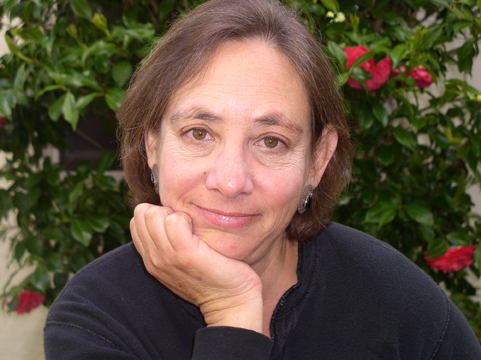Since the 1970s, Claire Schoen has been producing environmental documentaries in a variety of formats, from photography to film to radio. She’s recently expanded her repertoire to take advantage of online opportunities as a “web storyteller.” Her current project, RISE: Climate Change and Coastal Communities, strives to educate the public about the impact of climate change on San Francisco Bay through a series of “webstories” – short documentaries, composed of ambient sounds, personal narratives and still photography, designed for viewing on the web. I spoke with Claire about her life and her work.
BN: What is your connection to the Bay Area?
CS: I came from Washington, D.C. originally, but I’ve been living in Berkeley for the past 35 years. I love this Bay.
BN: Why did you start RISE?
CS: I started RISE for a couple of reasons. One is that I’d been living by the shores of the Bay for many years, and I didn’t know a lot about it, like even that it was a functioning estuary, or about the wetlands, or about efforts to restore them. I also wanted an excuse to get out on the Bay. I got on a kayak, ferries, a shrimping boat, sailboats and a whale-watching boat – all of that to research and report for RISE.
BN: How did you come to be an environmentalist web-storyteller?
CS: I started as a still photographer, then worked in film. Eventually I moved into radio, and then came full-circle by re-adding pictures with web-storytelling.
While I’ve produced media on a wide variety of social issues, my real passion is environmental education. I’ve been doing that ever since 1979, when I produced a film in Humboldt County about the logging industry. I’ve realized that all other issues will be made worse if we don’t fix climate change. So I want to get people to talk about it. Now, with RISE, I’m asking what will happen to people who live right on the Bay if climate change is not addressed.
BN: What are your goals with RISE?
CS: To start the conversation. Even here in the Bay Area, it just doesn’t come up. If we can’t talk about this, then we can’t act.
Next, there are certain things that have to happen: We desperately need to slow down climate change by reducing CO2 emissions. But, even if we were to stop driving all gas-powered cars right now, we can no longer turn back all the impacts coming with climate change. It’s too late. So we also need to talk about how to adapt. Until recently, the subject of adapting to climate change has been taboo for many environmentalists who’ve worried that it will take the focus off our work to reduce greenhouse gas emissions. The truth is we have to do both: adapt to the changes we can not longer halt, while keeping climate change from getting so bad that we will no longer be able to adapt.
BN: What lessons does Hurricane Sandy hold for those of us living in the Bay Area?
Hurricane Sandy’s devastating impact on New York City is a precursor of what San Francisco may soon have to contend with. RISE explores the threat to our financial district, subway system, airports and other infrastructure – all targets of Sandy in New York – and here, as in New York, much of the infrastructure is on land in the flood zone, created by diking and filling coastal wetlands.
BN: What have been your greatest successes so far?
CS: We set out to create RISE in three formats: radio, webstory and podcast. The radio series is out there in the world. It has won two awards and has been broadcast on over 150 stations around the country as well as internationally through NPR Worldwide and Armed Services Radio. And we’re beginning to get the webstories and podcasts out through a social media campaign. Finally, through this work we have been connecting and partnering with other environmental organizations.
BN: What challenges have you faced?
CS: Working on a project that people think is a downer. One of the reasons people don’t like this topic is because it’s a big bummer. So I tried to make the RISE series engaging and – dare I say? – entertaining. Steve Mello and Chuey Cazares (two individuals featured in the webstories) are real people telling true stories. If you can love them, or like them, or identify with them, then you can connect their story with your own story. And funding. Funders have said that I’m not hard-hitting, or too hard-hitting, or they’ve said I’m not “fair and balanced” because I don’t get into the debate of whether climate change is real.
BN: How did you fund RISE?
CS: Through foundations, philanthropists and a lot of sweat equity. A lot of people worked for very little compensation to create the RISE series.
BN: What is your favorite outdoor destination in the Bay Area?
CS: I love lots of places, but there are two that I didn’t really know before I began this project. First, the Delta. I had never spent time there and I didn’t understand how it works, the system of levees and farmlands. It’s beautiful and intricate up there. Also, the very southern tip of the Bay. I learned that there are white pelicans on the Bay. And in the Don Edwards wildlife refuge it is possible to walk out on levees and be surrounded by wetlands and birds. The South Bay Salt Ponds Restoration Project’s work to restore the wetlands is not only good for the birds. It’s good for climate change, because marshes serve as buffers against rising sea levels, and good for the residents, by providing more opportunities for recreation along the bayshore.
BN: Anything else?
CS: Help us get the word out! I encourage people to watch one of the webstories and then share it on Facebook, Twitter and other social networks.





